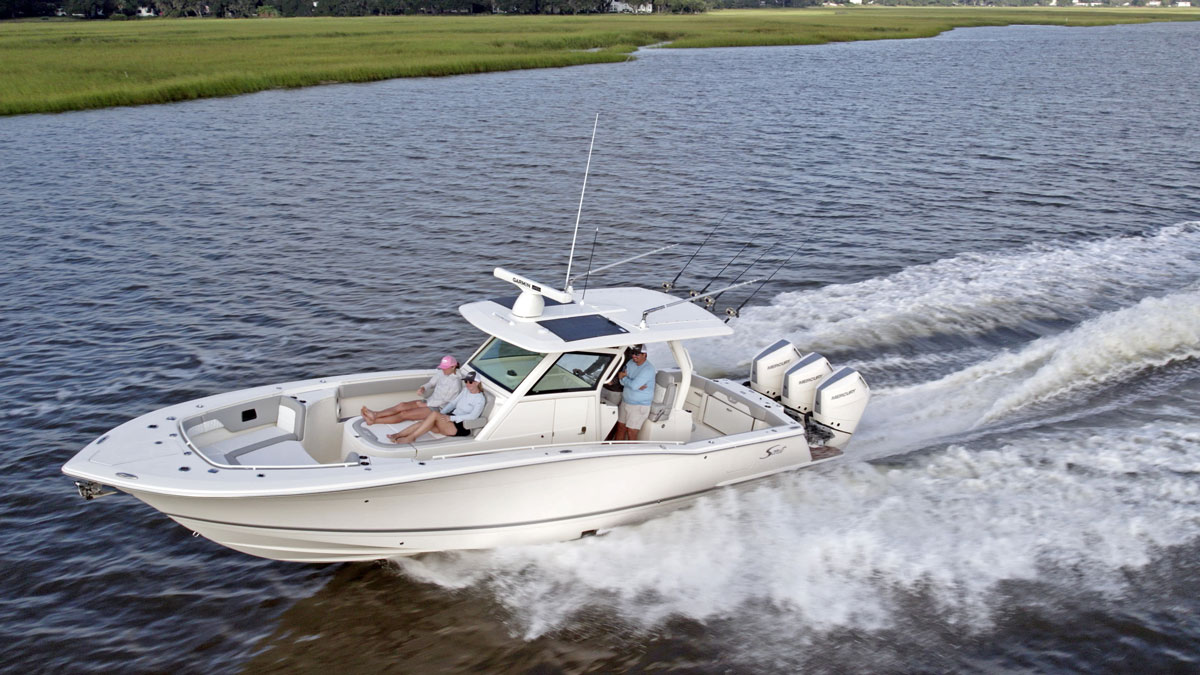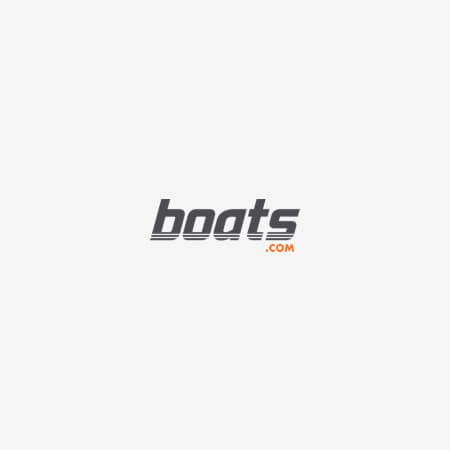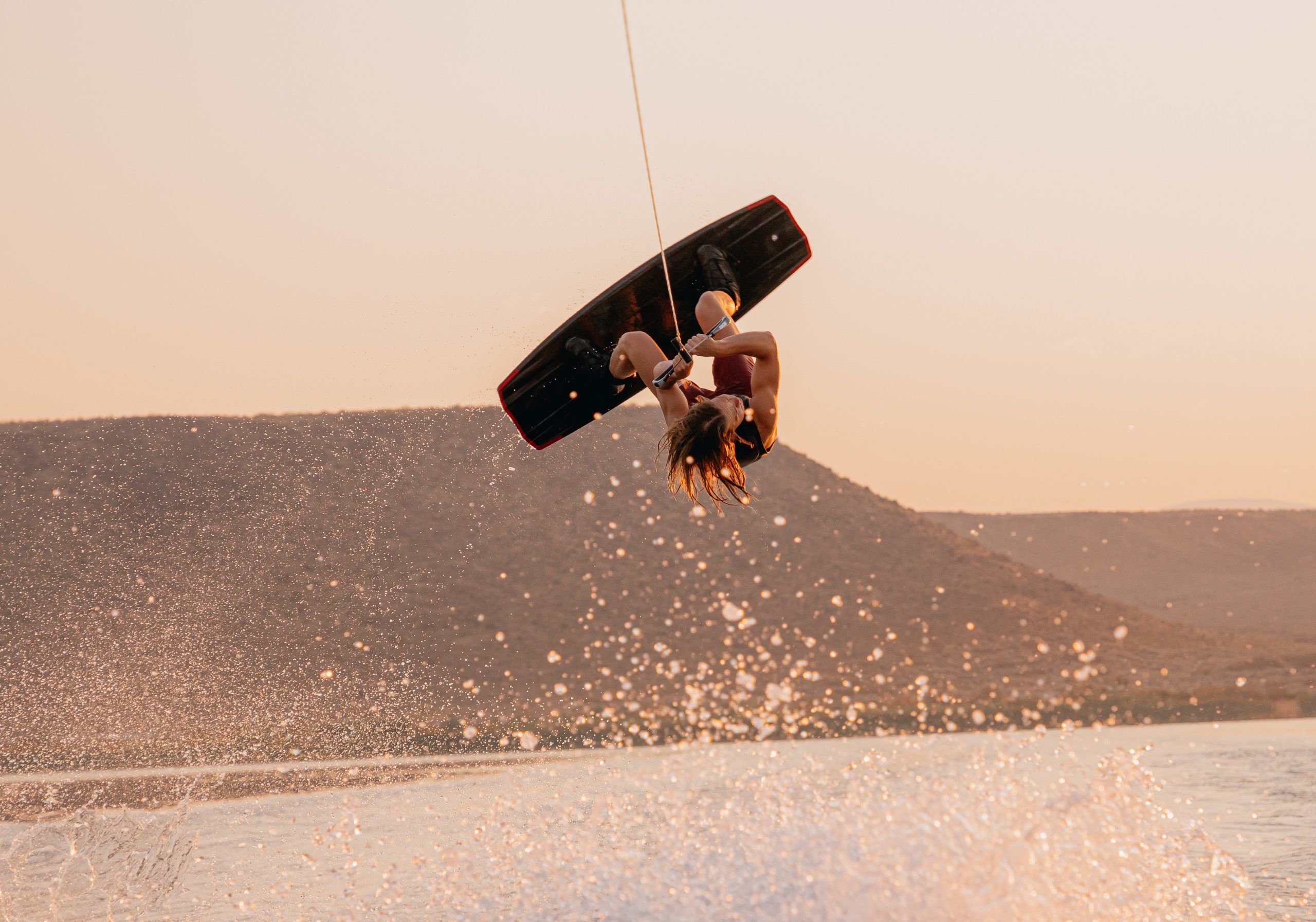How To Kneeboard: A Beginner's Guide
Essential tips and techniques to help beginners confidently enjoy the thrill of kneeboarding.
November 26, 2024
Getting up on a kneeboard for the first time might feel a little intimidating, especially with the anticipation of that inevitable first wipeout. But don’t worry—we’ve got the simplest methods to get you started. Kneeboarding, which began as a sunny 1960s California spin on surfing, has evolved into its own thrilling watersport. And don't worry, surviving that first splash is a badge of honor!
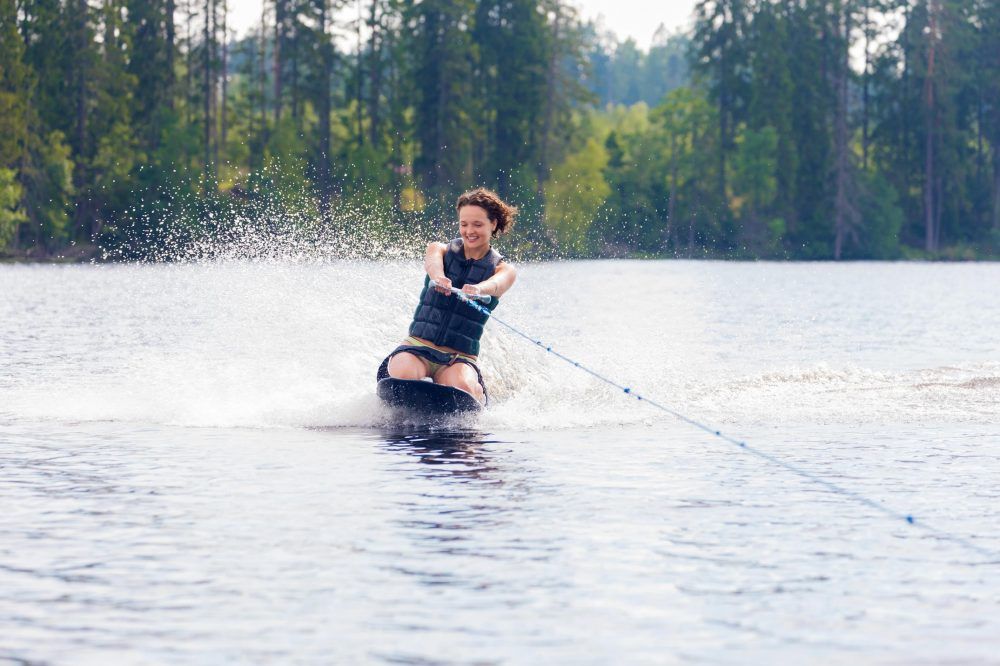
Above: Woman riding kneeboard. Photo via Pond5.
How to Get Up on a Kneeboard
Whether you’re trying kneeboarding for the first time or aiming to sharpen your skills, nailing the basics is the foundation of a smooth ride. Follow our step-by-step guide to confidently get up on a kneeboard and start carving the waves like a pro!
Step-by-Step Instructions
1. Positioning on the Board:
- Lay flat on your belly on the kneeboard, floating behind the boat.
- Place your torso forward, tucking your knees almost into the impressions in the foam where your shins go.
- Grip each side of the board with your elbows resting on the kneepad. Your feet should dangle off the back of the board in the water.
2. Handling the Towrope:
- If your kneeboard has a hook, place the towrope handle in the hook to start. If not, hold the towrope handle with your thumbs pressing down while gripping the board sides.
- Ensure the towrope is pulled tight and stretched out between you and the boat.
3. Getting on the Board:
- When the boat starts moving forward slowly, bring your knees up the board until they reach your elbows, centering them on the kneepad.
- Once comfortable, signal the driver to increase speed. Adjust the cruising speed based on weight and skill level.
- Shift your weight onto your heels, situating your body into the riding position.
4. Securing Yourself:
- If using a hook, pull the towrope handle out and hold it with your knuckles up and arms stretched out. This technique also applies if there is no hook.
- Secure the Velcro strap (if available) over your thighs to lock yourself in place.
5. Steering the Kneeboard:
- Point your head and shoulders in the desired direction to turn the front of the board.
- Apply pressure to the edge of the board in the direction you are steering.
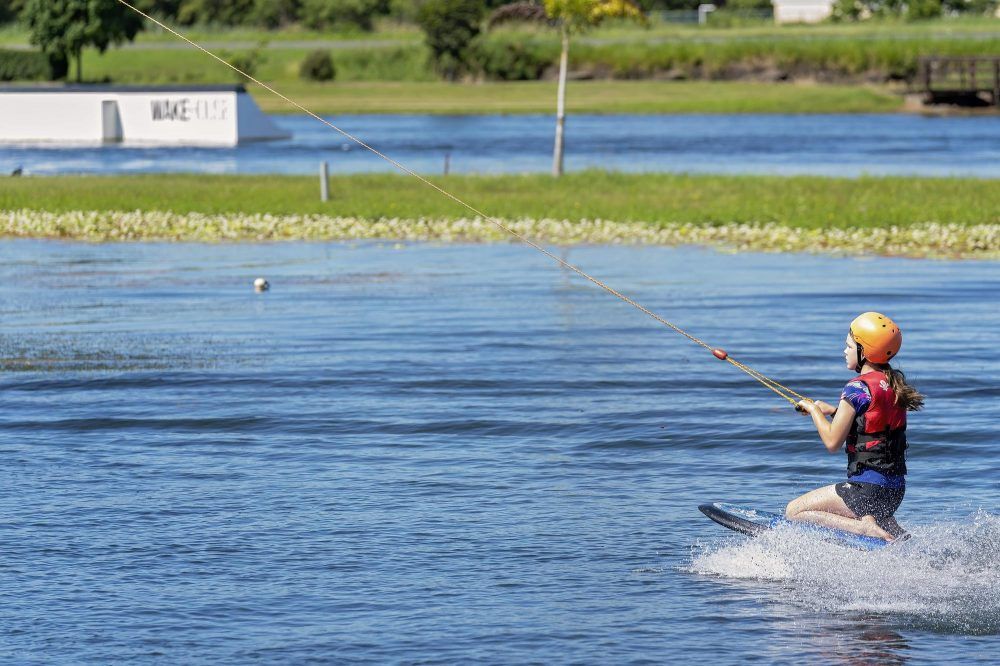
Above: Girl riding kneeboard. Photo via Pond5.
Tips for Kneeboarding Success
- Weight Distribution: Keep your weight biased to the rear of the board. Too much weight forward can result in a face plant.
- Let the Boat Do the Work: Avoid pulling yourself up too soon. Let the boat's motion help you get up.
- Practice: It may take a few tries to perfect your technique. By placing your arms under the strap initially, you ensure the strap ends up on top of your thighs, making it easier to adjust once you’re up and running.
Essential Kneeboard Equipment
- Life Jacket: Provides safety and confidence, keeping you afloat even if you fall.
- Kneeboard Tow Rope: Shorter with a comfortable grip, ensuring proper distance from the boat.
- Kneeboard: Specifically designed for kneeling, offering stability and control.
Choosing the Right Kneeboard
There are two main types of kneeboards:
- Recreational Kneeboards: Ideal for beginners, focusing on stability and durability. Made from rotational molded plastic.
- Competitive Kneeboards: Designed for performance, featuring a sleek design and sharper edges. Made from compression molded fiberglass.
Kneeboard Tow Rope Requirements
The tow rope is crucial for a smooth kneeboarding experience:
- Shorter Length: Typically 60-70 feet, keeping the rider in the boat's wake.
- Comfort Grip: Padded or rubber grips reduce fatigue and prevent blisters.
By understanding the history, benefits, and necessary equipment, you'll be well-prepared to enjoy kneeboarding to the fullest!

Above: Man riding kneeboard. Photo via Pond5.
Best Boats for Kneeboarding
Kneeboarding is best enjoyed behind certain types of boats built for the sport that offer the right wake and speed. Here are the top choices:
Inboard Boats Ideal For Kneeboarding
- Ski Boats: Inboard ski boats offer a great platform that leaves a minimal wake perfect for kneeboarding.
- Wake Boats: There are a variety of different inboard and I/O drive wake boats on the market ideal for kneeboarding, some that create perfect waves for surfing, while others create ideal wakes for jumps, tricks and aerials.
Outboard Boats Ideal For Kneeboarding
- Runabout Boats: Versatile and powerful enough for watersports such as kneeboarding.
- Center Console Boats: Good speed and power, often used for fishing but can be used for watersports.
- Pontoon Boats: While pontoons boats are generally designed around relaxation and comfort, they can also be used for kneeboarding especially some of the more performance-oriented models.
Jet Boats
- Personal Watercraft (PWC): Easy to maneuver, great for beginners.
- Larger Jet Boats: More power and stability, ideal for advanced tricks.
V-Drive Boats
- Engine at the rear, offering excellent wakes for tricks.
Key Features:
- Wake Size and Shape: Smaller wakes for beginners, larger for advanced riders.
- Speed Control: Consistent speeds are crucial.
- Power and Torque: Quick starts and steady speed.
- Tow Points: Proper tow points for better control.
Additional Considerations:
- Safety Features: Non-slip surfaces and accessible life jackets.
- Comfort and Space: Enough room for passengers and gear.
As you dive into kneeboarding, remember that each wipeout is a valuable part of the learning process. Just stay safe, wear your gear and embrace the spills and thrills along the way—each splash is a step toward mastering the sport.
Shop For Ski & Wake Boats For Sale Today









